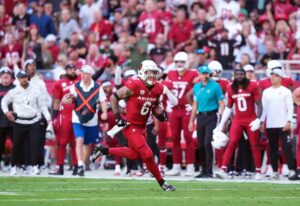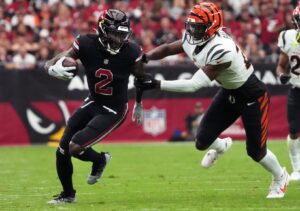In Mel Kiper Jr.’s most recent mock draft, tight end Michael Mayer was projected to the Green Bay Packers. The Notre Dame tight end put up some impressive numbers during his time in South Bend. In 2021, as a Sophomore, he had 71 receptions for 840 yards and seven touchdowns. He followed that up with 67 receptions for 809 yards and nine touchdowns in his Junior campaign. All of this is very impressive and he is clearly among the top tight ends in the draft. Still, the value of a first-round tight end remains debatable. Many NFL teams, like the Packers, could learn the valuable lesson to wait on a tight end in the draft.
Green Bay Packers Should Wait on Tight End in the Draft
The NFL draft is not just about adding a talented player, but about getting value out of the pick. Running backs are a key part of every NFL team, but great running backs have been found in many places throughout the draft. Add in that NFL teams are far more likely to use a running back-by-committee approach in the modern league. Even a very good running back does not give you the value of finding a high-end edge rusher. With that in mind, moving back in the draft to acquire more picks often has more value than getting a single player. The term “best player available” is a misnomer. The correct term would be “best value available.”
The first-round tight end is much like the first-round running back. Neither has much value compared to waiting. The tight end position may actually be less valuable than a running back. Running backs tend to produce for about a five-year window so having them early in their careers and losing them in free agency is a common practice. Tight ends tend to not produce during their first year.
Tight Ends Rarely Produce in Their First Season
There have been nine first-round tight ends from 2013-2022. In their first season, these tight ends averaged 30.5 receptions, 403.5 yards, and 2.2 touchdowns. For comparison, Robert Tonyan had 53 receptions, 470 yards, and two touchdowns last season coming off an ACL tear. This average was thrown off by the incredible rookie season of Kyle Pitts in 2021. His 68 receptions for 1,026 yards were an outlier statistically. Without that season, the remaining eight players averaged 25.9 receptions for 325.4 yards. While these players include Tyler Eifert, Hayden Hurst, and T.J. Hockenson, the first year of production is not there.
Looking through many of the better tight ends in the league today, they rarely produced big numbers in their first year. Travis Kelce, famously, did not catch a single pass as a rookie. Darren Waller had just two catches for 18 yards. George Kittle put up 43 catches for 515 yards and two touchdowns as a rookie. Even Rob Gronkowski was a career-worst 42 receptions for 546 yards as a rookie (though he did manage 10 touchdowns). Even throw in 34 catches for 552 yards for Mark Andrews and six catches for 74 yards for Jermichael Finley and the numbers are, at best, replacement level for a “bad” Tonyan year.
Star Tight Ends Have Come From Later Rounds
The other thing that stands out is that the elite tight ends mentioned above were not first-round picks. Teams who wait on a tight end in the draft still reap great benefits. George Kittle was a fifth-round selection. Darren Waller was a sixth-round pick. Travis Kelce, Mark Andrews, and Jermichael Finley all went in the third round. The highest selected was second-round pick Rob Gronkowski. While Robert Tonyan just had a down year after coming back from an ACL injury, he has been a valuable tight end in this league and started his career as an undrafted rookie free agent.
Waiting on tight end is the better option because the value of a first-round tight end is low. Tight ends are unlikely to be productive in their first season. A first-round selection should be someone capable of making an impact on your team in their first season (barring some exceptions like Patrick Mahomes). Also, later rounds are just as likely to produce a good tight end. While Michael Mayer is a very good college tight end, this is a class with several options that should be considered. Sam LaPorta will be available in the second or maybe the third round. He has produced for a few years in a lackluster Iowa offense and looks to be a better blocker than Mayer. Luke Musgrave could be gone in the late first round, but he has a similar skill set to Mayer. Iowa and Oregon State also had similar strengths of schedule for comparison. As a pass-catching tight end, Dalton Kincaid definitely has enough to eventually be impactful, even if he lacks the sort of blocking and size teams would rather see from the position.
Prioritize Other Positions
The Packers need to improve their edge rusher position as well as address safety and interior defensive line. These positions are going to be more valuable compared to the manner of support they could get in later rounds. The Packers should add a tight end, but they should not do so in the first round. If the Packers are trying to get value for next year, they should focus elsewhere with the first-round pick. A later-round tight end will be just as likely to produce early and just as likely to develop into a star later.
Main Photo: Embed from Getty Images






